Accelerators for Applied Research
Addressing research questions spanning a broad range of topics from materials science to medical imaging and space exploration
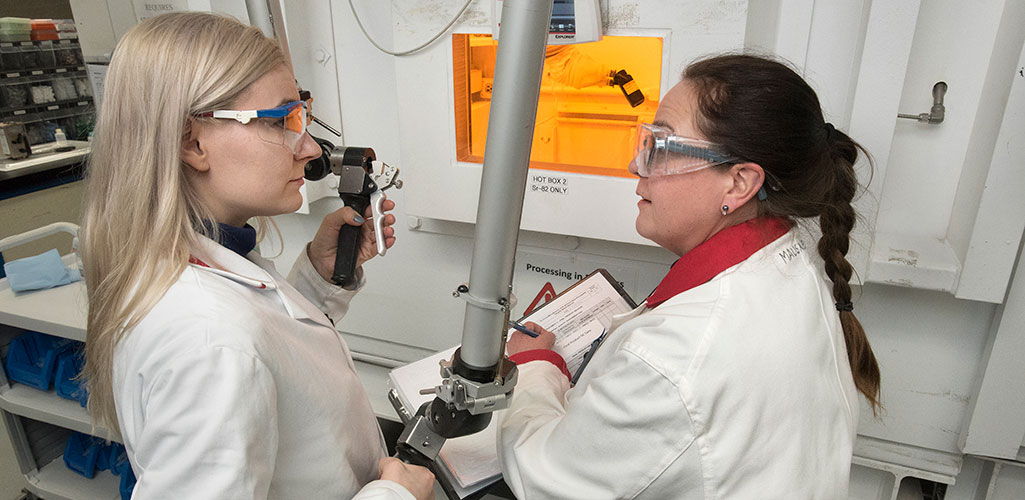
Brookhaven Lab operates several accelerator facilities that support the Laboratory’s applied research mission. These facilities directly address questions and concerns spanning a broad range of topics from medical imaging to space exploration, from materials characterization to modeling of complex physical processes, and from technology development to medical isotope production. Leading scientists lend their expertise to these accelerators and offer crucial assistance to collaborating researchers, pushing the limits of both science and technology.
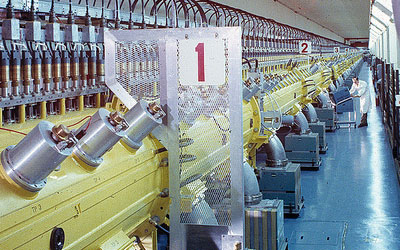
Brookhaven Linac Isotope Producer
BLIP is positioned at the forefront of research into radioisotopes used in cancer treatment and diagnosis, producing commercially unavailable radioisotopes for use by the medical community and related industries. Among the isotopes produced are: Strontium-82, used for heart stress tests; Germanium-68, used to diagnose and track patients’ response to cancer treatments; and new experimental isotopes such as Actinium-225, which shows promise in the treatment of cancer. BLIP’s energetic proton beams can also be used to explore the effects of radiation on novel materials under consideration for next-generation nuclear reactors and high-power particle accelerators. By studying how proton irradiation affects materials and assessing the damage scientists can determine the crucial properties and ideal materials needed to withstand the extreme environments of next-generation reactors and accelerators.
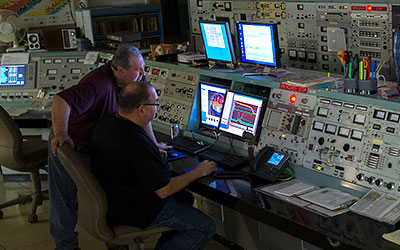
Tandem Van de Graaff
The Tandem Van de Graaff generators are used to test and calibrate the effects of radiation on materials, ion irradiation and implantation (used in the design of computer chips), for research on the biological effects of radiation, and for special R&D projects. Some specific applications include the study of radiation effects on electronics for space applications, calibration of particle detectors, studies of radiation effects in cell cultures, production of track-etched filter material, using ions to enhance superconducting materials, and high-energy ion implantation in semiconductors.
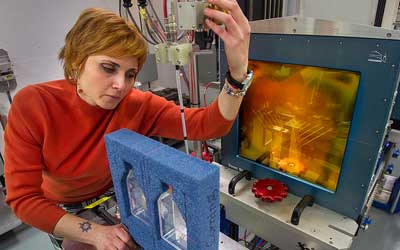
NASA Space Radiation Laboratory
Non-NASA users at the NASA Space Radiation Laboratory (NSRL) include radiation therapy researchers (funded by the National Cancer Institute, or NCI) and electronics testers. The facility can be used to test and calibrate new detectors, in particular, including those not necessarily intended for use in space. Users have also tested materials for radiation hardness, using doses equivalent to those encountered during decades-long missions in space. The beam energies at NSRL include those relevant for radiation therapy, so the facility has also been used to study the efficacy of various ion species that could be used for treating cancer.
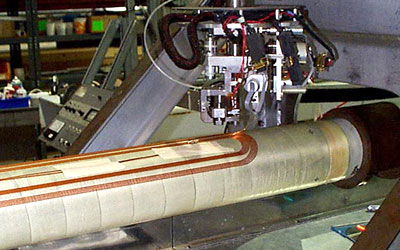
Superconducting Magnet Division
Superconducting magnets have applications in areas such as nuclear magnetic resonance (NMR)—a technique used to study material properties—and medical applications like magnetic resonance imaging (MRI) and proton therapy. Future applications include compact fusion reactors, efficient superconducting generators, and transmission lines that deliver energy without energy loss. The Superconducting Magnet Division (SMD) has a strong history of partnering with industry and transferring technology to small and large businesses. SMD is pursuing partnerships to develop high-temperature superconducting devices for accelerators, scientific magnets, and fusion and other power applications.
Other Facilities Supporting Applied Research
Accelerator Center for Energy Research
ACER accelerators have been used to study radiation-induced synthesis of polymers (for example, hydrogels used to treat wounds and fabrics used to extract uranium from seawater), and the reaction mechanisms of key enzymes, including those that protect us from oxidants—which, when defective, may cause diseases such as amyotrophic lateral sclerosis (ALS).
Relativistic Heavy Ion Collider
Many of the technologies developed for RHIC and its injectors have found applications. The high-quality low-energy heavy ion beams can be used for ion implantation in semiconductors or high-temperature superconductors. Compact accelerators for ion beams can be used for cancer therapy. Novel beam-focusing techniques using permanent magnet material—developed for next-generation beam-cooling systems—allows for the construction of very compact gantries that are used in proton-beam or ion-beam cancer therapy. Energy-recovery linacs, being developed for the Electron-Ion Collider, could have a number of applications, such as intense Extreme UV lasers for next-generation chip manufacturing or intense gamma beams for efficient medical isotope production.
Instrumentation Department
Brookhaven Lab’s Instrumentation Department has a long tradition of developing novel detection concepts and advanced instrumentation techniques. Examples include semiconductor devices for photon and particle detection, and gas and noble liquid detectors for neutron, photon, and particle detection that were designed and mostly manufactured in our facilities and have been deployed around the world. We’ve developed and implemented very-low-noise front-end and novel readout schemes in our application specific integrated circuits, which are used in detectors for applications in high energy physics, photon science, astrophysics, medical science, and more. We’ve also designed and developed high-throughput data systems (both for acquisition and control) to enable data-intense experiments in the facilities at Brookhaven Lab and around the world. We develop highly efficient photocathodes by engineering the photocathode materials.
National Synchrotron Light Source II
The capabilities of the National Synchrotron Light Source II (NSLS-II) as a user research facility expand far into realms of applied research of many different disciplines, from novel materials discovery to biological and environmental sciences. For example, understanding materials on the nanoscale can help scientists develop new design approaches that mimic nature’s ability to assemble nanomaterials into useful devices, more simply and economically. Watching chemical reactions live offers scientists new insights that could help them optimize the design of batteries and fuel cells and let them tackle the modern-day challenges of clean and affordable energy. Uncovering the 3-D design of biological molecules and watching them in action is the first step towards designing more effective drugs to combat disease.
Accelerator Test facility
The Accelerator Test Facility (ATF) provides a unique combination of high brightness electron beams and mid-infrared laser beams to enable tests of advanced accelerator and laser technologies. These beams can also be used to irradiate and characterize electronics and materials. The ATF has contributed to: the development of high brightness photocathode electron guns that are in regular use at accelerators around the world; tests of the high field magnetic undulator concepts that are central to the operation of facilities such as the Linac Coherent Light Source at SLAC National Accelerator Laboratory; and the recent testing of a permanent magnet lattice system that has the potential to make Energy Recovery Linac accelerator designs more cost effective (currently being deployed at the Cornell-Brookhaven Electron Test Accelerator).



